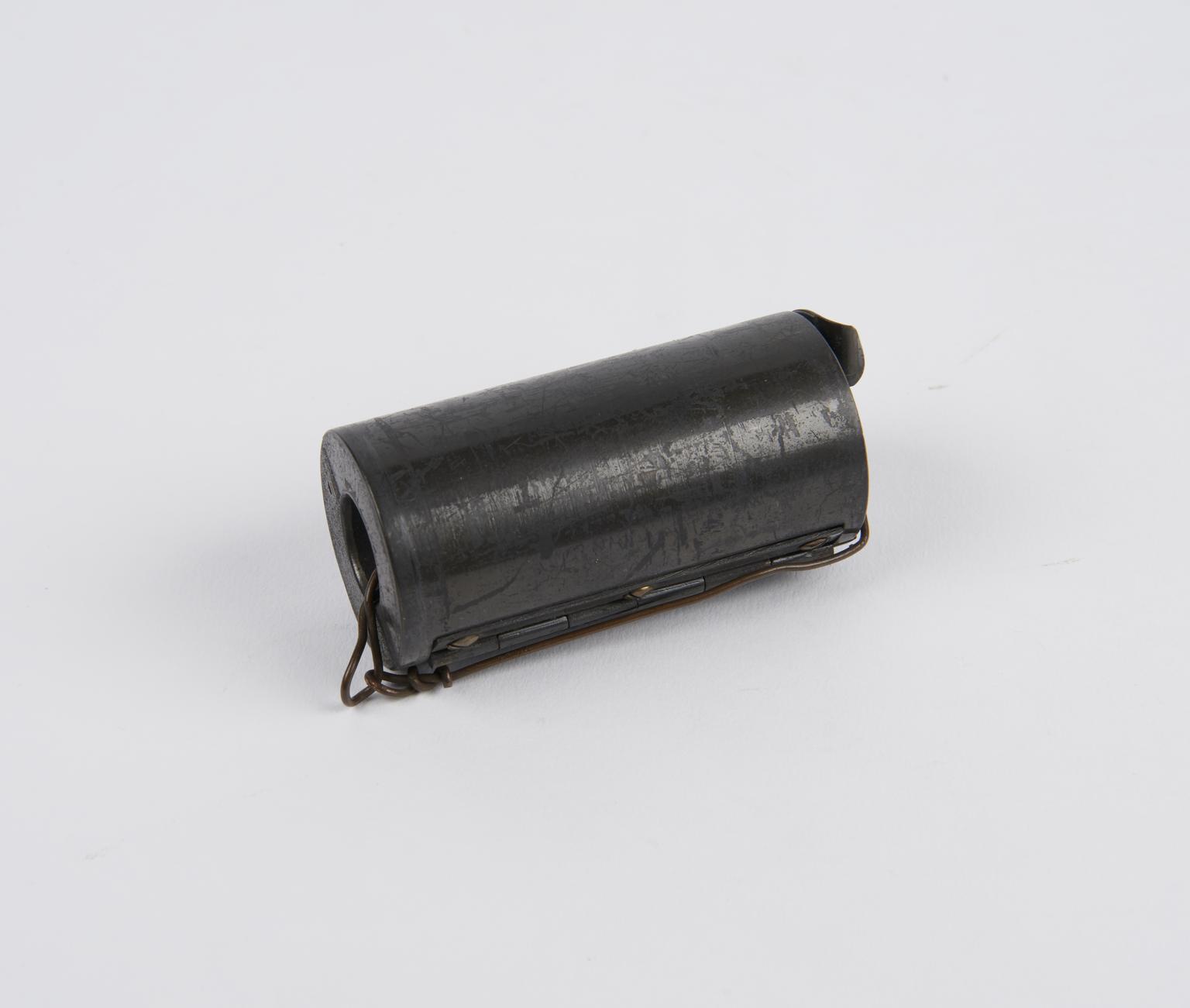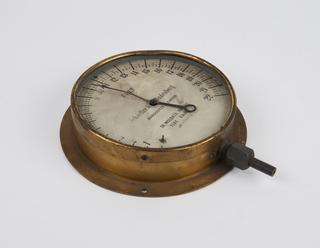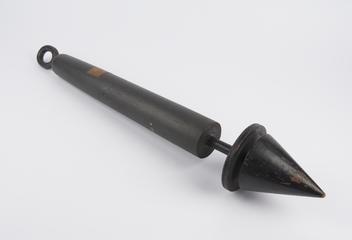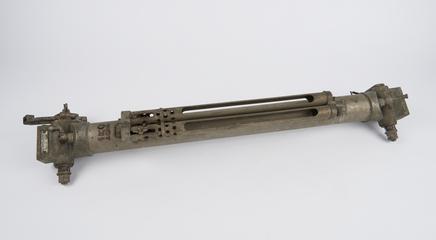
Reversing thermometer in ‘Scottish Pattern’ frame for taking sea temperatures at depth
Reversing mercury thermometer in ‘Scottish Pattern’ frame for taking sea temperatures at depth, made by Negretti and Zambra, London, UK, 1896.
More
Surveyors and navigators struggled to take accurate readings of sea temperature at specific depths. Previous modifications of conventional maximum and minimum thermometers were used in the mid 1800s, but it was not always possible to know at what depth the minimum temperature had been reached. Reversing thermometers attempted to overcome this problem. They incorporated mechanisms that would abruptly capsize the thermometer once it reached the required depth.
This design had a messenger release system so that the thermometer could be overturned quickly, such as when being used in shallow water. At the required depth, a weight was sent down the cable from the ship, triggering the thermometer to overturn.






